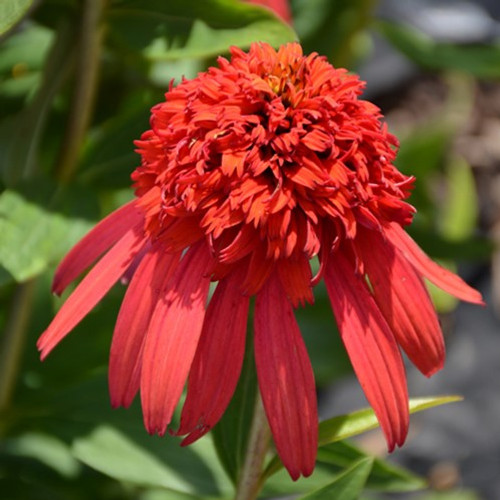| Echinacea 'Hot Papaya' | USDA Zone: 4-9 |
Cone-fections™ Hot Papaya Coneflower has masses of beautiful lightly-scented orange daisy flowers with red overtones and dark brown eyes at the ends of the stems from mid summer to mid fall, which are most effective when planted in groupings. The flowers are excellent for cutting. Its pointy leaves remain green in colour throughout the season.
These stunning blooms are the first ever orange-red double coneflowers; color stays true and does not fade; a strong and bushy habit that is ideal for sunny borders and mixed containers; deadhead spent blooms.
Hot Papaya Coneflower is recommended for the following landscape applications;
- Mass Planting
- Border Edging
- General Garden Use
- Container Planting
CONE-FECTIONS™ Series
Bloom Time: Summer
Fragrant
Long-Blooming
Drought Tolerant
Attracts Hummingbirds, Butterflies
Deer Resistant
Common name: Coneflower, Echinacea
|
Key Feature
|
Light Needs | Landscape Uses |
 |
 |
|
|
|
|
| More About Hot Papaya Echinacea |
| Height: 30-36 inches |
Spread: 24-30 inches |
Flower Colour: Gold / Orange Shades |
|
Easy to grow, prolific bloomer. Deadheading will prevent seeding, but birds are crazy about the seeds, and the seedheads are attractive in the winter, especially in the snow. If removing them, leave the foliage at the base of the plant to overwinter. May be slow to emerge in the spring. These generally don't need to be divided, but can be divided in early spring or early fall. Echinacea should only be grown in full sunlight. It is very adaptable to both dry and moist locations, and should do just fine under typical garden conditions. It is considered to be drought-tolerant, and thus makes an ideal choice for a low-water garden or xeriscape application. It is not particular as to soil type or pH. It is highly tolerant of urban pollution and will even thrive in inner city environments. Note that when grown in a container, it may not perform exactly as indicated on the tag - this is to be expected. Also note that when growing plants in outdoor containers and baskets, they may require more frequent waterings than they would in the yard or garden. Be aware that in our climate, most plants cannot be expected to survive the winter if left in containers outdoors, and this plant is no exception. NOTE: Some flowers and plants may be harmful or poisonous to people or pets if touched or ingested. If you require more information before placing an order, please let us know in advance. |










